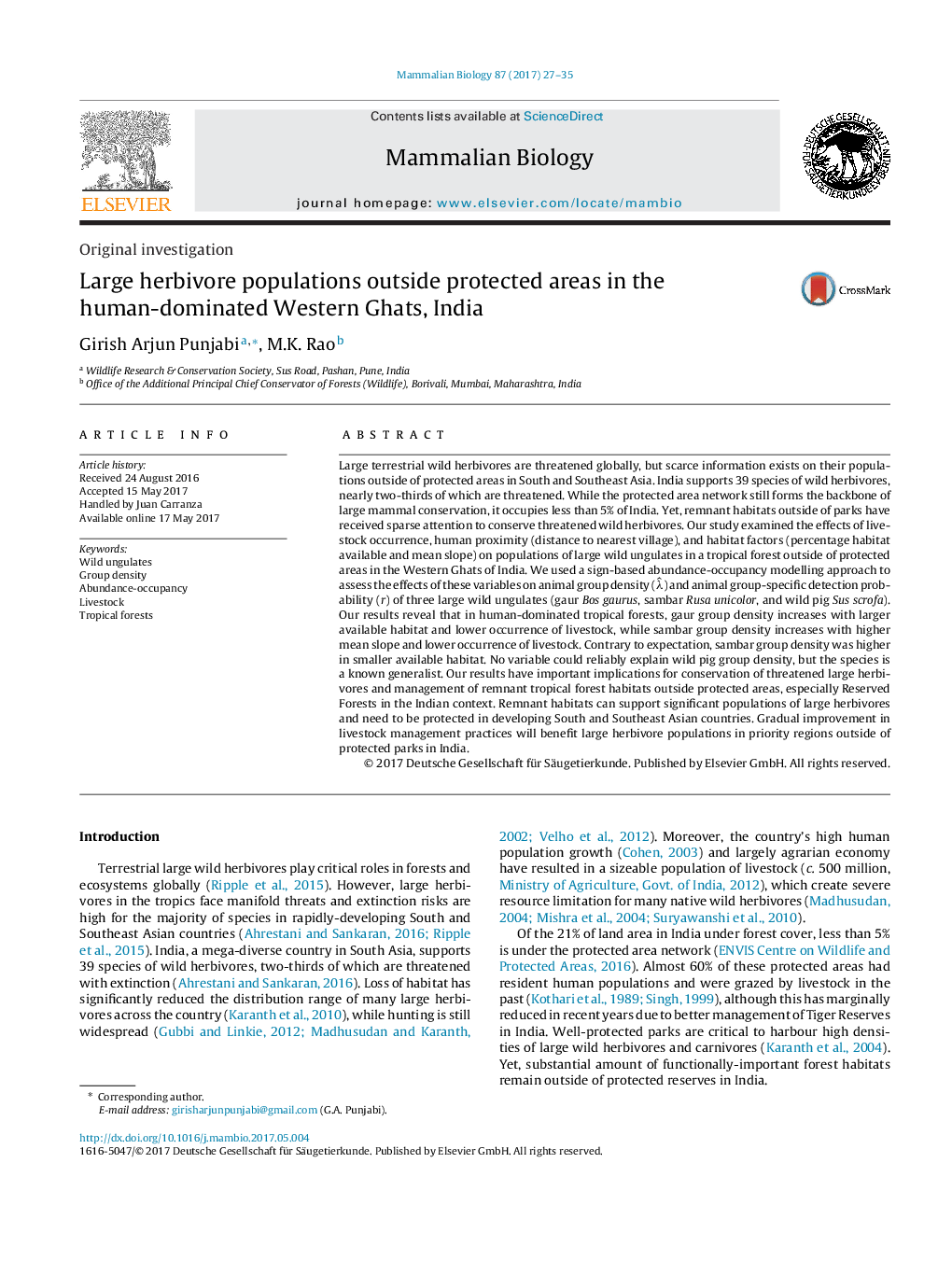| کد مقاله | کد نشریه | سال انتشار | مقاله انگلیسی | نسخه تمام متن |
|---|---|---|---|---|
| 5533704 | 1550460 | 2017 | 9 صفحه PDF | دانلود رایگان |
Large terrestrial wild herbivores are threatened globally, but scarce information exists on their populations outside of protected areas in South and Southeast Asia. India supports 39 species of wild herbivores, nearly two-thirds of which are threatened. While the protected area network still forms the backbone of large mammal conservation, it occupies less than 5% of India. Yet, remnant habitats outside of parks have received sparse attention to conserve threatened wild herbivores. Our study examined the effects of livestock occurrence, human proximity (distance to nearest village), and habitat factors (percentage habitat available and mean slope) on populations of large wild ungulates in a tropical forest outside of protected areas in the Western Ghats of India. We used a sign-based abundance-occupancy modelling approach to assess the effects of these variables on animal group density (λË) and animal group-specific detection probability (r) of three large wild ungulates (gaur Bos gaurus, sambar Rusa unicolor, and wild pig Sus scrofa). Our results reveal that in human-dominated tropical forests, gaur group density increases with larger available habitat and lower occurrence of livestock, while sambar group density increases with higher mean slope and lower occurrence of livestock. Contrary to expectation, sambar group density was higher in smaller available habitat. No variable could reliably explain wild pig group density, but the species is a known generalist. Our results have important implications for conservation of threatened large herbivores and management of remnant tropical forest habitats outside protected areas, especially Reserved Forests in the Indian context. Remnant habitats can support significant populations of large herbivores and need to be protected in developing South and Southeast Asian countries. Gradual improvement in livestock management practices will benefit large herbivore populations in priority regions outside of protected parks in India.
Journal: Mammalian Biology - Zeitschrift für Säugetierkunde - Volume 87, November 2017, Pages 27-35
